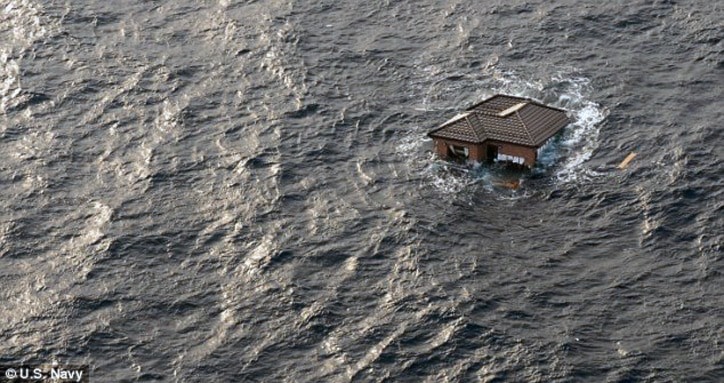PORT McNEILL—The Regional District of Mount Waddington will have a role in the disposal of debris that washes in from last year’s tsunami in Japan.
But the district’s board of directors was not willing to subject Seven Mile Landfill to the full brunt of costs associated with cleanup efforts on North Vancouver Island.
“This problem has the potential to be huge, and I’d be careful of taking any ownership of this at the regional level,” Area D director Dave Rushton said after RDMW operations manager Patrick Donaghy distributed copies of a letter, published on the RDMW website, indicating the landfill would waive tipping fees for sanctioned groups delivering tsunami debris that washes ashore in the district.
Donaghy was responding to media reports of the potential imminent arrival to the B.C. coast of the massive debris field, which resulted from the Mar. 11 earthquake and tsunami and which has been making its way across the Pacific Ocean since.
The memo was based on past precedent for large-scale cleanup efforts undertaken by volunteer groups approved by RDMW, but directors said during their regular January meeting the regional district should involve both the provincial and federal governments in the effort to clean up what is an international problem.
“I’d like to suggest that we write to the province and ask that there be some kind of provincial support provided on the occasion this becomes a calamity,” Director Doug Aberley of Alert Bay said.
“We could fill up our facility based on a free offer, and I don’t think that’s worth the risk.”
Donaghy said that as part of a larger strategy to deal with the matter, the RDMW would track the amount, type and source of any tsunami-related material brought to the landfill.
Aberley responded that he would like the memo to be set for a limited time, perhaps 30 days, and subject to review.
“Something that doesn’t commit the regional district to an eternal supply of free space,” he said.
Aberley noted the City of Tofino requested provincial assistance, and suggested the RDMW contact the province to lobby for assistance should a wave of refuse “swamp our capacity.”
Area A Director Heidi Soltau of Sointula said some North Island organizations have already begun applying to the Ministry of Environment to deal with beach cleanup of tsunami debris.
“I know we, as a landfill, could use provincial money.”
RDMW treasurer Joe Mackenzie asked to be recognized, and pointed out funding was not the only concern for a landfill that has limited airspace.
“Getting help with tipping fees is not going to help us secure our landfill,” he said.
“What are we going to do with money if we fill the landfill?”
Donaghy noted all garbage located on the North Island is the responsibility of RDMW, so the district may need to devise a comprehensive strategy to deal with an influx of material that exceeds the landfill’s capacity.
Rushton asked if the federal government should have a role.
“If it’s in the water it’s federal; if it’s on the foreshore it’s provincial,” said Donaghy.
“When it gets to the high tide mark, it’s ours,” said Donaghy.
Donaghy agreed to pull the landfill letter from the RDMW website and contact Tofino to coordinate strategies on both the community level and with regard to securing provincial assistance.
Directors then approved a motion by Aberley to contact both the provincial and federal governments and request they draft a comprehensive strategy for dealing with disposal of waste from the tsunami.
The vote was taken and one final parting shot from Port McNeill Mayor Gerry Furney was recorded.
“The point was made the federal government was responsible for anything that was in the water. I would say if we find anything, we throw it back in the water,” he joked.
